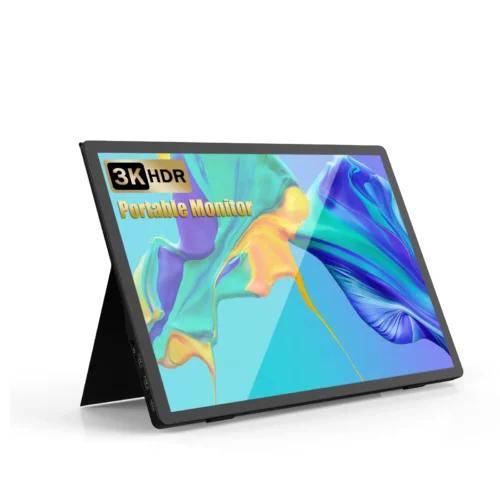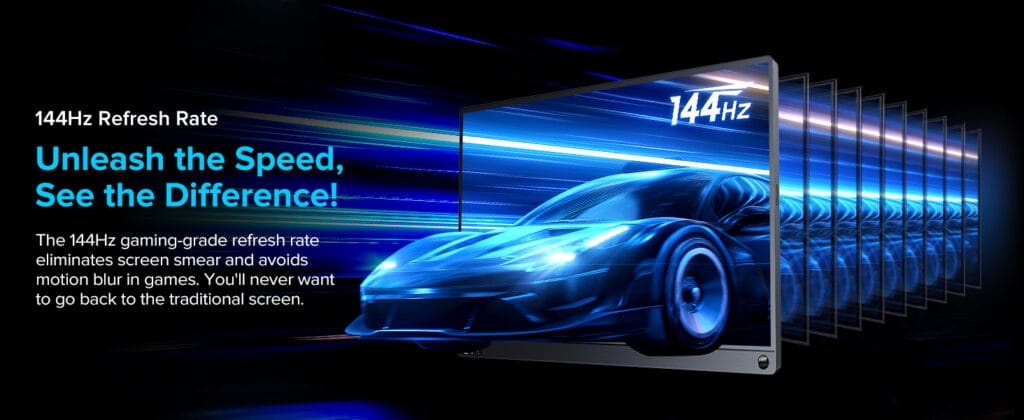In your hunt for the best monitor, you will come across two of the most commonly used display technologies: IPS monitors and LED monitors. Though each has its set of specific advantages, there are various differences between the two that can make one more fitting for you than the other.

Understanding LED Monitors
An LED monitor makes use of Light Emitting Diodes for backlighting. In essence, it is an advanced form of LCD technology. The monitors are energy-efficient and can be very slim in design. Thus, they are preferred by users who need sleeker, space-saving configurations.
Pros of LED Monitors:
- Brightness and Contrast: With their high contrast and brightness, an LED screen is great in a room with poor illumination conditions.
- Energy Efficiency: With their low power consumption, they are more economical to operate over a long period of time.
- Lifespan: They tend to be longer-lasting because of their hardy and efficient light sources.
However, one disadvantage is that their color accuracy is not as good. This may not be appropriate for professionals who need highly accurate color representation. Another option would be better for such a professional.
What Are IPS Monitors?
IPS monitors stand for In-Plane Switching, and their role is more about the wider LCD category in giving better color consistency and wide viewing angles. Such monitors will do better in applications that involve high accuracy and clarity.
IPS Monitors: Pros
- Color Accuracy: IPS displays ensure great color reproduction and, hence, are loved by photographers, designers, and video editors.
- Wide Viewing Angles: Even if the person views from aside, colors remain the same. That’s perfect for teamwork on projects.
- Visual Quality: The display of IPS monitors is great, with sharpness and richness in particular for high-resolution content.
However, the response time of an IPS monitor may not meet the expectations of gamers or individuals who want fast input and response, as it is potentially slower than other types of monitor panels.
Comparison between IPS and LED Monitors
Both monitors have their own unique areas of applicability, as the choice between them rests on personal preference. Let’s make a quick look at:
| Feature | LED Monitors | IPS Monitors |
|---|---|---|
| Brightness | Brighter; great for varied lighting conditions. | Moderate brightness but enhances color depth. |
| Color Accuracy | Limited for professional use. | Superior, suitable for creative applications. |
| Viewing Angles | May distort from side views. | Wide viewing angles with consistent visuals. |
| Energy Efficiency | Highly energy efficient. | Slightly higher energy usage. |
| Response Time | Often faster, better for gaming. | Adequate for general use but slower for gaming. |
Which Should You Choose?
When it comes to choosing between an IPS and an LED monitor, you should consider your usage pattern:
- For Gaming or Bright Environments: LED monitors, combined with fast response time and high brightness, will go well with it.
- For Creative Professionals: With better color accuracy and more vivid details, the IPS monitor will be optimal for editing photos, videos, or graphics.
- General Productivity and Everyday Use: Either is fine, but the IPS takes precedence in ensuring quality visuals or LED does for power efficiency.
Ultimately
The choice between an IPS monitor and an LED monitor depends on which features are most important to you. If color accuracy and viewing experience are important, then an IPS monitor is the way to go. For brighter displays and cost-saving benefits, LED monitors may fit your needs better.
Related Products
-
 14.0″ Ultra Slim Monitor FHD 1080P External Display with Dual Speakers Second Screen for Laptop PC Phone Xbox PS4/5 Switch – A1 GAMUT Slim
14.0″ Ultra Slim Monitor FHD 1080P External Display with Dual Speakers Second Screen for Laptop PC Phone Xbox PS4/5 Switch – A1 GAMUT Slim -
 13.5 Inch FHD 3K Portable Displays Screen Slim Lightweight HDR Travel Monitor for external monitors for Laptop Xbox PS5 Switch
13.5 Inch FHD 3K Portable Displays Screen Slim Lightweight HDR Travel Monitor for external monitors for Laptop Xbox PS5 Switch -
 15.6 Inch FHD 1080P Portable Displays USB C HDMI External Display for Laptop Second Monitor
15.6 Inch FHD 1080P Portable Displays USB C HDMI External Display for Laptop Second Monitor





